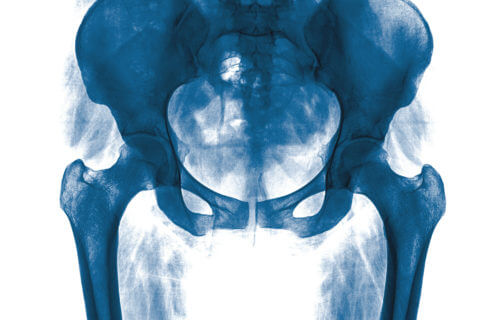CAMBRIDGE, Mass. — It seems like a no-brainer to point to superior intellect and bigger brains of humans if asked what separates people from animals. An equally correct answer, however, would be the human pelvis. Scientists say it’s our unique pelvis that allows humans to walk upright on two legs, while also making it possible for mothers to give birth to babies with large heads (housing those big brains).
Now, new research from Harvard University is providing groundbreaking new insight into the development process of the human pelvis during pregnancy. While the pelvis is well understood on a purely anatomical level, far less is known when it comes to how and when the pelvis takes shape during development. This new research is changing all that.
Study authors have uncovered exactly when during pregnancy the pelvis takes shape, and even identified the specific genes and genetic sequences that oversee the entire process. These findings may one day help shed further light on the genetic origins of bipedalism and perhaps facilitate the development of new treatments or predictors for hip joint disorders like hip dysplasia and hip osteoarthritis.
“This paper is really focused on what all humans share, which are these changes to the pelvis that allowed us to walk on two legs and allowed us to give birth to a large fetal head,” says senior study author and evolutionary biologist Terence D. Capellini, a newly tenured Professor in the Department of Human Evolutionary Biology, in a statement.
How does the pelvis form during pregnancy?
Study authors say that many features absolutely essential to human walking and birth begin to take shape at around the six- to eight-week mark during pregnancy. Such developments include key pelvic features unique to humans — more specifically the structure’s curved and basin-like shape. The formation occurs while bones are still cartilage, meaning they can easily curve, rotate, expand, and grow. Furthermore, even as other cartilage in the body begins turning to bone, the developing pelvic section stays as cartilage a bit longer, giving the important structure more time to form.
“There appears to be a stalling that happens and this stalling allows the cartilage to still grow, which was pretty interesting to find and surprising,” Capellini adds. “I call it a zone of protection.”
To make these discoveries study authors performed RNA sequencing. This showed which genes in the region actively trigger pelvis formation and stall ossification (the process by which softer cartilage turns to bone). Hundreds of genes were identified that either turn “on” or “off” around the six- to eight-week time period to help form the ilium in the pelvis. The ilium is the largest and uppermost bone of the hip with blade-like structures that curve and rotate into a basin to support walking on two legs.
Comparing human bone structure to apes
A chimpanzee or gorilla must shift the mass of their weight forward and use their knuckles to walk or balance themselves. Luckily, the shorter and wider reorientation of our pelvic blades help us humans avoid all that and just walk on two feet instead. Those same features also help increase the size of the birth canal. In comparison, apes have much narrower birth canals and more elongated ilium bones.
The first steps of this project included comparing the differences among hundreds of skeletal samples of humans, chimpanzees, and gorillas. This process, researchers explain, highlighted the striking effect natural selection has had on the human pelvis, especially the ilium. Next, a selection of four- to 12-week-old embryos were studied under a microscope (with the consent of people who had legally terminated their pregnancies). Samples of the developing human pelvis were then compared to mouse models in order to identify the on and off switches that spark pelvis formation.
“Walking on two legs affected our pelvic shape, which affects our disease risk later,” Capellini concludes. “We want to reveal that mechanism. Why does selection on the pelvis affect our later disease risk of the hip, like osteoarthritis or dysplasia. Making those connections at the molecular level will be critical.”
The study is published in Science Advances.

